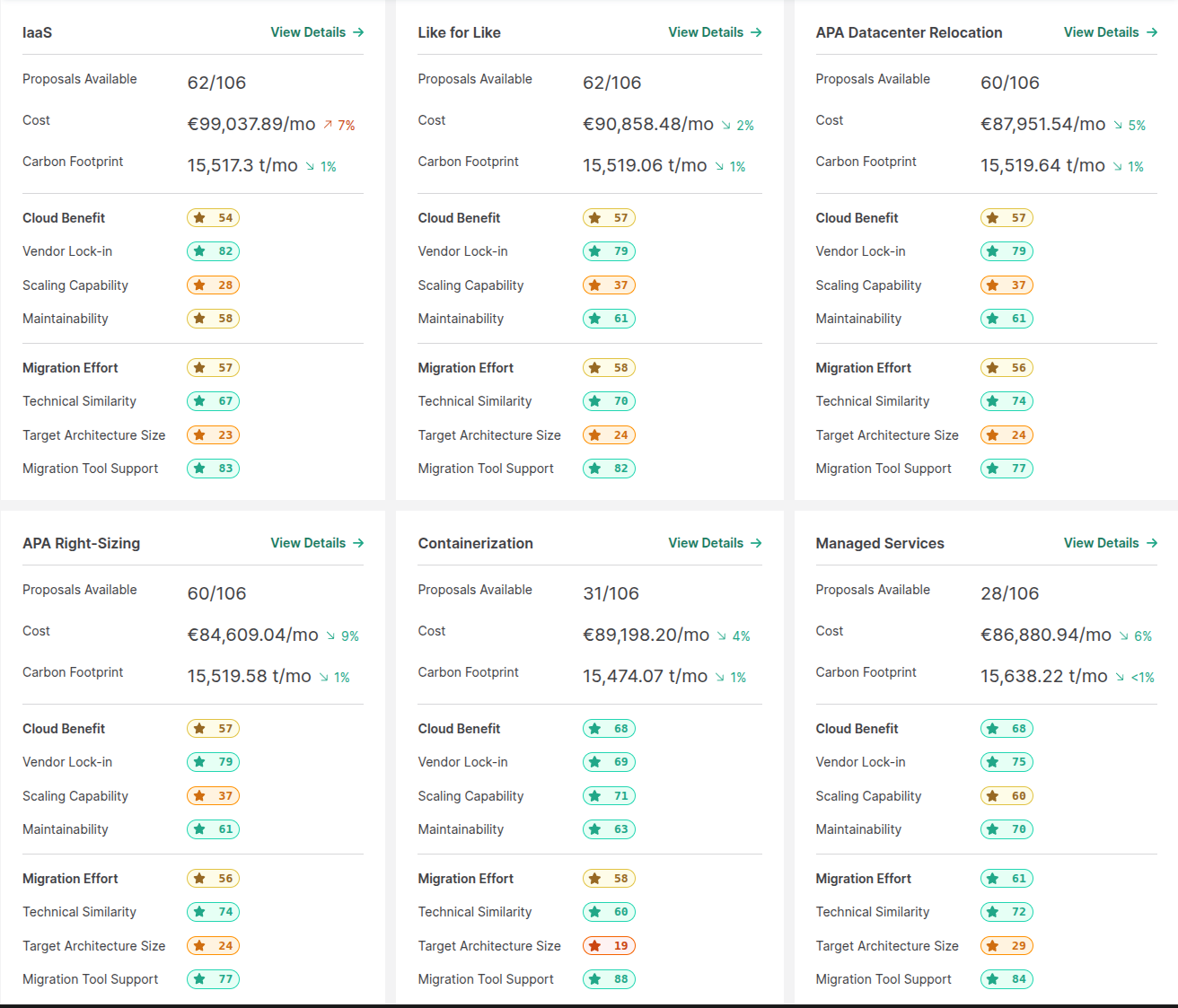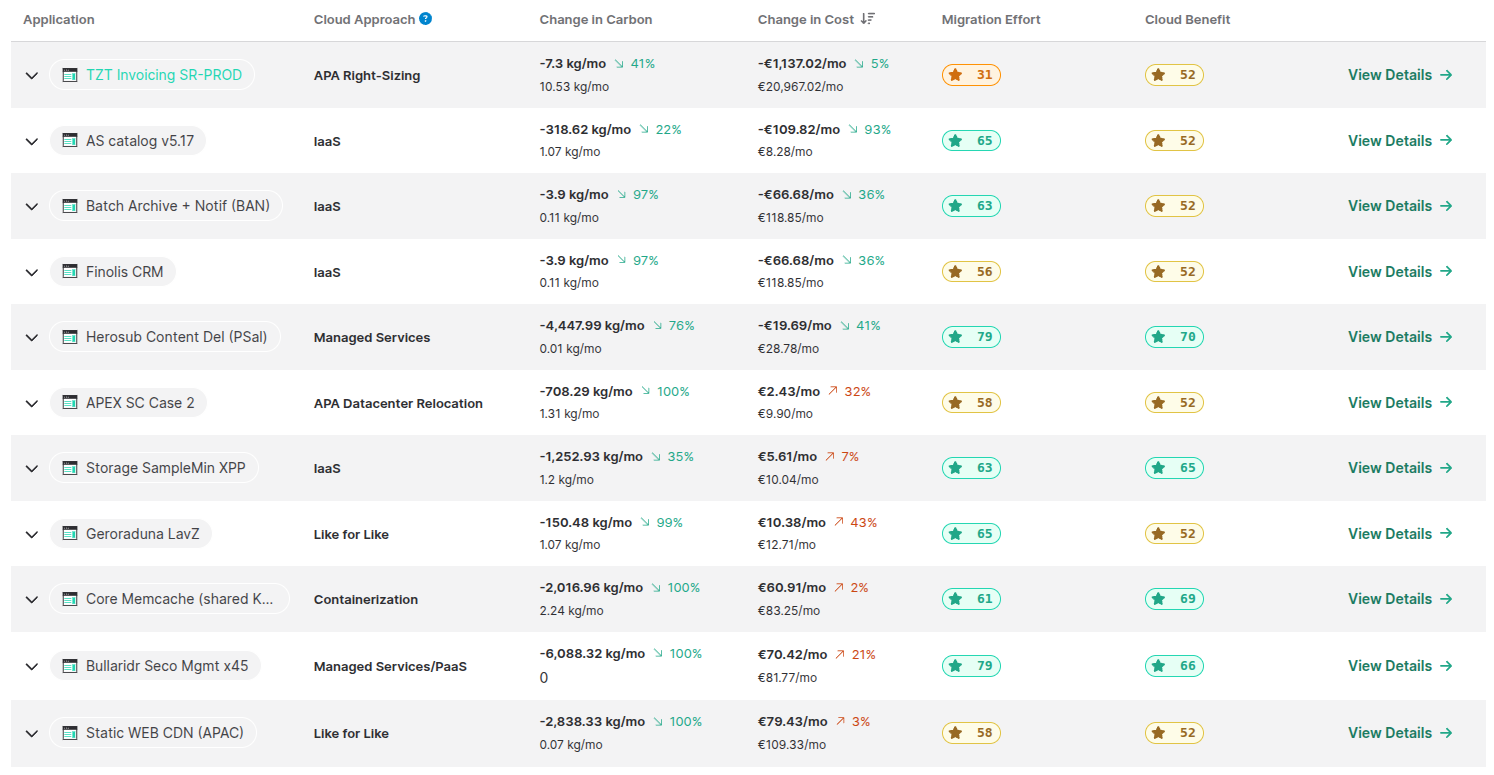Identifying the most promising cloud modernization opportunities

FinOps practitioners and surrounding stakeholders manage (parts of) a business application portfolio. They are tasked to improve the value-to-cost ratio of applications, either by optimization or modernizing applications where meaningful.
Understanding where a change is most beneficial, can justify the efforts and opens up chances for auxiliary applications and services too, is the key question FinOps stakeholders try to find answers for.
The complexity and effort to identify the most promising candidate applications for change strongly depend on the types of changes you are considering and the size of your application estate.
Identifying and right-sizing an underutilized cloud VM that runs a particular application database will certainly lead to savings, but why not move to a managed database offering or deploying it on Kubernetes? Would such a move even sustain the potentially increased transformation effort? How does one or the other type of transformation impact the carbon footprint of our organization? What organizational or technical benefits accompany different transformation approaches? For which set of applications do we actually see the greatest impact when transforming?
Answering these questions requires a look ahead into possible future state architectures, simulating the required changes and predicting cost and carbon and shed some light on expected efforts and technological benefits.
Comparing a future state application portfolio with your current estate gets stakeholders aligned to scope in on transformation candidates, determine budgets, pick on migration partner support and make decisions with confidence.
How Txture supports you in your FinOps and transformation activities
Txture always had a very particular value proposition to efficiently support application cloud target architectures and transformation planning using an automated approach.
Our ability to auto-generate baseline architectural propositions for applications e.g. leveraging optimized IaaS, containers, managed services, application runtime platforms or serverless components, has now become a core ingredient in our Application Portfolio Advisor (APA) module.
For each application in your estate we run a simulated transformations across a variety of prospective cloud service strategies and compare
- Cost savings potentials
- Carbon savings potentials
- Technology and operational benefits
- Expected migration effort
The comparisons support both predefined cloud service strategies as well as custom approaches defined by you. Figure 1. shows e.g. strategies revolving around the use of IaaS, sticking to similar technologies in cloud (cf "Like for Like"), trying to change and/or right-size within cloud data centers (cf. "APA Datacenter Relocation" and "APA Right-Sizing"), the user of container technologies and more.
All data for these comparisons come from our extensive technology database and cloud services knowledge base.
 Figure 1. Simulated cloud service strategies presenting different types of scores for high-level comparison.
Figure 1. Simulated cloud service strategies presenting different types of scores for high-level comparison.
Based on these calculated cloud approaches, APA will now also help select the best transformation option per application (see Figure 2). This "Best Approaches" section shows the overall transformation potential in your estate (or e.g. of all applications of a business unit).
 Figure 2. A new dedicated section called Best Approaches to help pick the most promising cloud strategy per application.
Figure 2. A new dedicated section called Best Approaches to help pick the most promising cloud strategy per application.
Furthermore a detailed table allows you to inspect your top-rated candidate applications for a transformation (see Figure 3). You can see that all transformation opportunities displayed per application show the following information for decision support:
- Proposed cloud approach
- Target cost and cost savings by comparing to as-is data
- Target carbon emissions and carbon savings by comparing to as-is data
- Cloud benefit score, observing used cloud services and technologies in terms of vendor lock-in, scaling capability, and maintainability.
- Migration effort score, providing indication of complexity and "expense" of transforming an application from angles like technical similarity (evaluating how similar as-is and target technologies would be), target architecture size, indicating the target stack size and migration actions applied on as-is assets, and migration tool support.
 Figure 3. List of candidate applications that provide an opportunity of change, including information about the general cloud approach to be applied, expected cost and carbon savings as well as benefit and efforts scores supporting a decision.
Figure 3. List of candidate applications that provide an opportunity of change, including information about the general cloud approach to be applied, expected cost and carbon savings as well as benefit and efforts scores supporting a decision.
In summary all these additions will serve as a great tool for you to discuss with application owners and your leadership about transformation opportunities. Once decisions are made and budgets allocated, you and your migration partners will be continued to be supported by Txture's Transformation Cockpit, in which detailed target architecture plans can be laid out. The baseline for successful transformation is provided right within Txture's Application Portfolio Advisor.
Your feedback to our new feature
Want to learn more about the Txture platform? Reach out to us, we'll be happy to help!